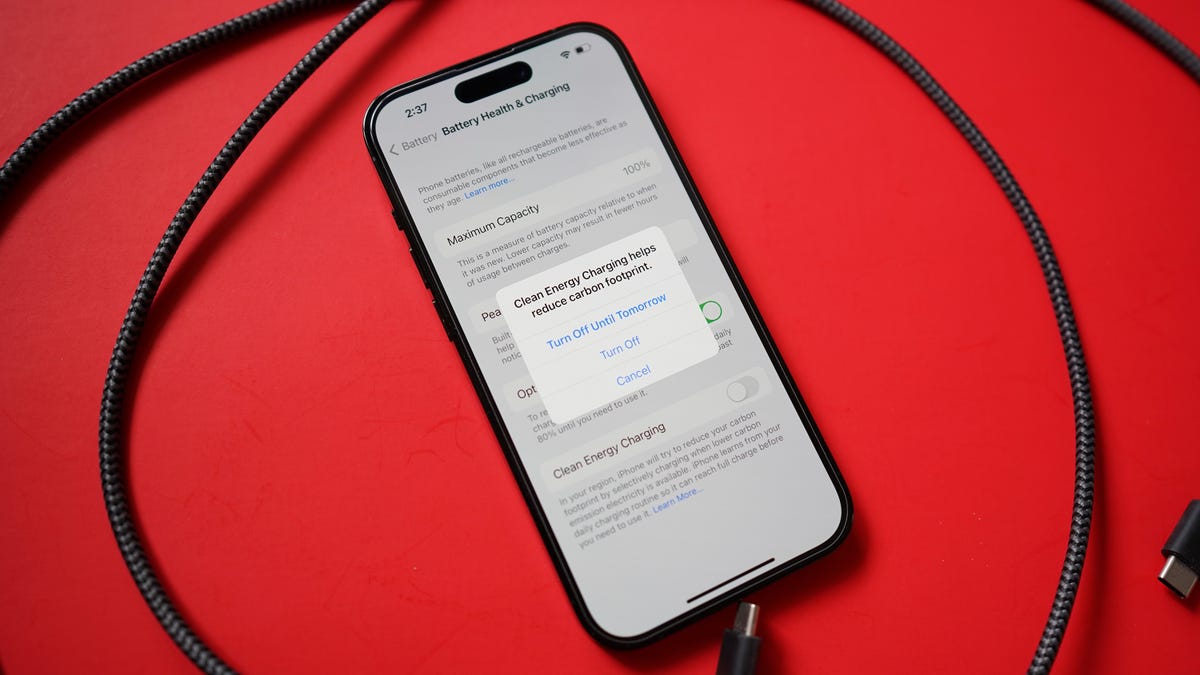- Apple doesn't need better AI as much as AI needs Apple to bring its A-game
- I tested a Pixel Tablet without any Google apps, and it's more private than even my iPad
- My search for the best MacBook docking station is over. This one can power it all
- This $500 Motorola proves you don't need to spend more on flagship phones
- Finally, budget wireless earbuds that I wouldn't mind putting my AirPods away for
Want to extend your iPhone battery life? Stop making this common mistake

I have spent a lot of time writing about how battery wear is a fact of life, and the more a battery is used, the more it will wear. It is a consumable item, and it will wear.
Also: 12 Android phone settings you should change to dramatically increase battery life
But there are also things that we can do to prevent battery wear. A research paper led by Jihyun Hong at Postech and Jongsoon Kim at Sungkyunkwan University on EV (electric vehicle) batteries uncovers a new enemy — too much discharge.
Discharging EV batteries harms them
Without getting too deep into the chemistry and physics of battery wear, the study discusses a newly identified mechanism of oxygen loss in layered oxide cathodes used in lithium-ion batteries, specifically during the discharge process at voltages below 3.0V. Because of this additional wear, the study emphasizes the importance of carefully setting DCOVs (discharge cut-off voltages) to slow down degradation and improve battery longevity.
Basically, excessively discharging batteries harms them.
What about the batteries in our devices?
While the study is limited to EV batteries, can we assume that this chemistry applies to the lithium-ion batteries found in smartphones, tablets, laptops, and other similar devices?
Yes and no.
Also: iOS 18.4 update draining your iPhone’s battery? Try these 6 fixes
To strike a good balance between battery runtime and battery life, the typical point at which the battery management controller (a circuit that controls the charge and discharge of rechargeable batteries) sets the DCOV cutoff is normally around 2.8 to 3.0V. So, batteries in all sorts of devices dip below that 3.0V damaging discharge point mentioned in the study.
But not all batteries will go that low, and I have found that higher-end devices and devices built to better handle temperature extremes have more conservative battery management and might cut off at 3.3V.
For reference, iPhone batteries that I have tested appear to have DCOVs in the range of 3.1 to 3.3V and do not normally go below the 3.0V threshold, so they should not be subject to the damage highlighted by the study.
Still, don’t needlessly discharge your device to zero
Since most of us do not know the DCOV of the battery in our devices, it is a good idea not to allow the battery to fully discharge, just in case.
If you want another reason not to fully discharge a battery, it is that if the voltage of the battery falls too low, the battery management controller itself might come to the conclusion that the battery is damaged and refuse to allow it to be charged, leaving the device dead in the water. I have come across that a lot, and while there are ways and means around it — sometimes — it is a hassle best avoided.
Also: New Pixel 9a update limits its battery to extend its life – how it works
So, along with the advice of not cooking or freezing the battery, not charging it when it is overly hot or cold, not keeping it on charge all the time, and storing devices with the battery at about 50% charged, I would add that you should not needlessly discharge your device to 0% if you can avoid it.
Get the morning’s top stories in your inbox each day with our Tech Today newsletter.

